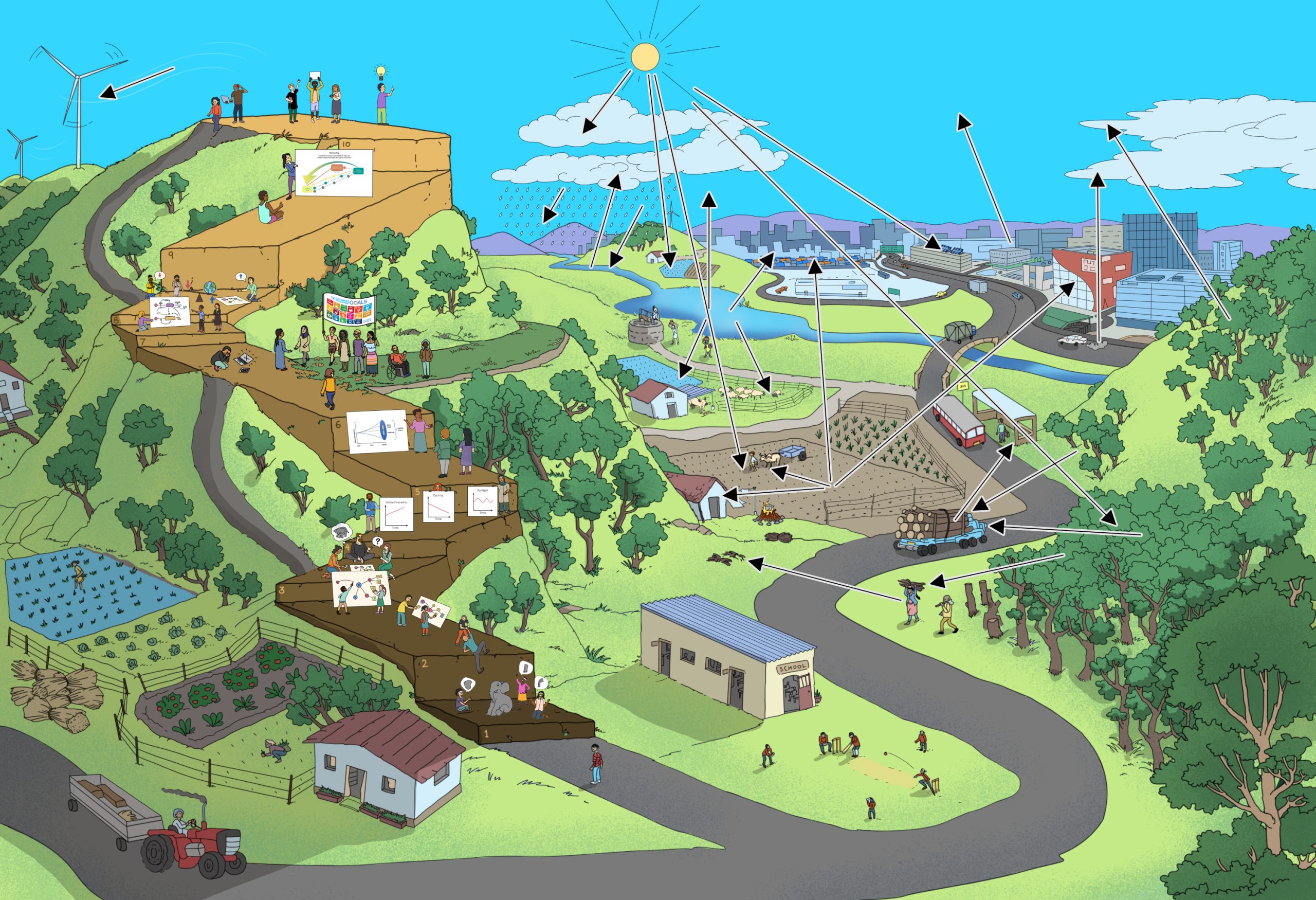Systems thinking is the ability to describe and/ or visualize a part of a complex reality, express that part of reality as a model, understand the model as a system, use the model to explain the behaviour of the system, anticipate the behaviour of the system, and evaluate its impacts on sustainable development, identify potential points of, and types of interventions, generate options to act, assess their impacts in the frame of sustainable development, and decide whether further actions are necessary or not.
What is the aim?
To enable learners to:
- understand whether the model of jeans production is a system(see ‘What is a System?’ in General Step 2), and if it is a system, is it static or dynamic?
- become familiar with and use the specific vocabulary of systems approaches (such as element, interrelationship, function, system, dynamism)
- identify elements such as actors or factors in the production of jeans,
- identify interrelationships among elements in the production of jeans, such as processes, communications, energy or information flows, cultural norms, legislations or rules,
- understand that a system has integrity (functions as a unit) and has a boundary,
- understand that a system may be nested as a ‘sub-system’, within another system, or even within other systems,
- list the outputs of the system/sub-systems,
- understand that co-functioning elements and interrelationships cause dynamism of systems,
Activities, tasks, and suggested learning methods
- First, ask the learners to conduct the generic “Moving Game” (see the Appendix for this learning method).
- Next, engage the learners in making cards are after a discussion and conduct the “Moving Game with Cotton” (also provided in the Appendix). This activity should help the learners understand that different elements in a system are related to each other in dynamic relationships.
- Ask learners to review the concept map they made in the previous step and (in pairs or small groups) develop it further. They can add elements and interrelationships and prepare a series of statements that describe the system and its components.
- Discuss with the group:
- The model is the representation of a dynamic system, where the elements are interrelated.
- When the dynamics of one or more elements changes or stops altogether, it affects the other elements in turn. Thus, the primary learning point for learners in this activity is to understand that the elements in the system to produce a pair of jeans are interrelated.
- You can help sharpen the learners’ competence to make and communicate logical arguments by getting them to explain the dynamic behaviour of the system. The learners may present their explanations through interviews, Explainer videos or podcasts.
- Encourage the learners to describe the production of jeans, as depicted in the model they have developed. They may use a technique such as Explainer
- Ask four learners to prepare a presentation on their model and ask some other learners to interview them. The interviewing learners should try to identify the elements in the system and the interrelationships between them.
Examples of the interviewers’ line of questions to explore the model:
- One interviewer wants to know how the production of jeans works in detail.
- Another wants to check on the structure of the model.
- Some ask about the origin of stonewash jeans.
- Another interviewer may ask about the colours of jeans.
- Another wants to check on the structure of the model.
- How does pricing affect the popularity of the brands?
Tip: the learners can present their model, interconnecting the words and symbols, or just using symbols that represent the elements of the system. For guidance, see the worksheet “From reality to model”.

Figure 4 Model of the Cotton Jean System
For these different activities, learners may be supported by learning methods such as:
- Moving Game and its variation for cotton jeans system
- Concept Mapping
- Understanding Causation
- Explainer video
- Interviews
- Podcast
Further leading questions
- Is the water supply needed for cotton production guaranteed?
- Are there water shortages due to cotton cultivation?
- Are there ecological impacts due to agrochemicals used in cotton cultivation?
- Provides cotton cultivation and processing solid income for labourers?
- Who decides the purpose or function of a system?

